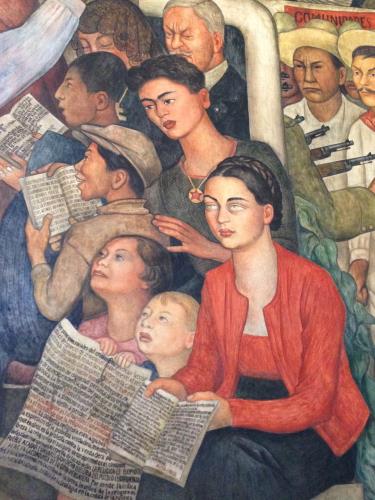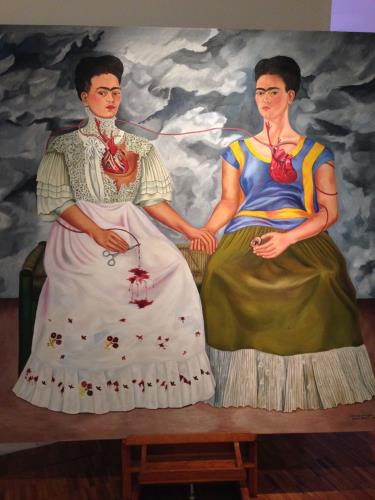Un obtained the dual Bachelor degrees in Chinese Language and Art (film and television production) of Peking University and dual Master degrees in East Asia Studies and Asia Pacific Studies of University of Toronto with the research field in literature and movies. She won the Henry Luce Foundation Chinese Poetry & Translation Fellowships and had been the village residing poet in the Vermont Creative Studio. She was invited to attend many international poem festivals such as the one held in Portugal and worked as the lyricist of Macao’s first original indoor opera A Fragrant Dream. She published some collections of poems in Cross-Strait regions, and has been engaged in academy and publication for long time and writes columns for media organisations in Taiwan, Hong Kong and Macao.


Those who have been to Mexico city may have deep impression toward female painter Frida Kalho. Her photos with symbolic synophridia, small whiskers on the upper lips and colourful national dress, as well as the replica of bloody self-portrait, could be found in every corner of Mexico city, which is so called the biggest city of the world. Her figure could be found on the souvenirs and cultural and creative products. What’s more, her and her husband Diego’s portraits are on the 500 peso. If the most influential cultural and creative IP in Lisbon was poet Pessoa, Frida must be the one in the Mexico city.
As a die-hard fan of Frida Kalho, I set off to this city with poor security in order to search for Frida’s old track. Although Frida’s status is not as good as murals master Diego in the art history, her legendary life and heart-broken autobiographical works made her the eternal muse in Mexico. In 2002, many non-art lovers began to know this legendary woman through her biography and adapted film Frida. Many music, stage shows, dance dramas, paintings and costume designs are inspired by her, which makes her become popular over the world. Her works are ranked as the most expensive auction-prices among the global female painters.
One-third of Frida’s works are self-portraits, expressing her feeling to the public. Even Picasso will feel ashamed when facing Frida’s honesty. Her autobiographical artwork was not pioneering. However, in such a selfie-addicted, clocking-in and self-revealed privacy era, she is the model of individualisation. L.A. designer Sam Cantor had created 160 emoji (FridaMoji) with Frida’s self-portraits. He said: “Who else artists would be more suitable than Frida to be the model samples of emoji to express emotions?”
Writer Mu Xin had ever said: “All the great literature is not recording happiness but disturbance and riot.” The great epics of Diego highlight publicity and present the history of Mexico, which is certainly inspiring. Frida’s autobiographical paintings seem to have nothing to do with city, history and politics. Actually, these paintings integrate with the life in Mexico city. Frida’s paintings are discussing about love and suffer beyond limitations of territory and time.
Literary and artistic creation is to fix personal matters first; but literary and artistic appreciation is to let readers find the answers themselves through the artworks. As for Frida’s importance, she lets us recognise the influence of individualisation and cultural values brings from individualisation which cannot be underestimated. In this machine replication era without aura, if the literature, art, or so-called cultural and creative products want to move the audiences, they should put down the traditional baggage like creating things that people love to see and hear, writing delivering ethics. Individualisation is exploring toward personal dilemmas. In the same time, it makes productions more humanised and appealing.
The last meal in Mexico city, I accidentally ran into the restaurant where Frida and Diego got married, which is the perfect period for my trip. Each city has different elements to attract traveller. Some are appetites, like egg tarts and pork chop buns; some are food for thought—I am willing to have several more trips to Mexico because of Frida.